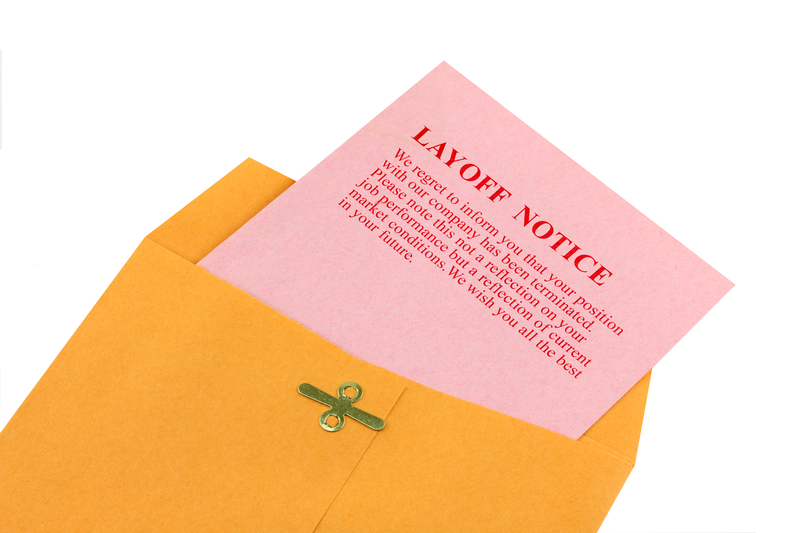The post-termination defense may seem like a good defense against sketchy cumulative trauma claims, but a closer look at California statutes reveals how the Labor Code undermines that defense.
Let’s take a moment to focus on a very common situation that claims examiners find themselves in:
- You’ve received a new claim where the injured worker is alleging cumulative trauma (CT) injuries after being terminated.
- The application is the first notice of any injury to the employer.
- The chances are that the post-termination defense instantly pops into your mind.
In the California workers’ compensation system, there are numerous codified defenses that sound particularly potent on paper, but in practice have almost no teeth whatsoever. The post-termination defense is one of these unfortunate defenses.
Adding insult to injury is the fact that California is the only state that recognizes CT injuries. That particular twist makes defending post-termination CT claims quite problematic.
But even before we get to that issue, how and why the injured worker is no longer employed by the employer needs to be examined. Plainly put, if the injured worker quit/resigned by their own accord before making their CT claim, they were not “terminated” by the employer and thus the post-termination defense is not even applicable!
But what about claims where there was a clear termination before the employer ever received notice of any potential CT injuries? In those situations, there certainly is a strong implication that the workers’ compensation claim was filed in retaliation for being fired.
Those who are unfamiliar with these types of claims may be in for a nasty surprise at this stage of the analysis.
The surprise is tucked away in Labor Code Section 3600, which is the statute where the post-termination defense is codified. Specifically, Section 3600(a)(10)(D) provides that “no compensation shall be paid unless the employee demonstrates by a preponderance of the evidence that…[t]he date of injury, as specified in Section 5412, is subsequent to the date of the notice of termination or layoff.” [Emphasis added.] So what does that language actually mean?
For many claims examiners, their first introduction to Section 5412 comes up when trying to get their clients dismissed from CT claims due to a lack of coverage during the alleged CT period. Labor Code Section 5412 says:
“The date of injury in cases of … cumulative injuries is that date upon which the employee first suffered disability therefrom and either knew, or in the exercise of reasonable diligence should have known, that such disability was caused by his present or prior employment.”
In layman’s terms, this section means that the defense needs to figure out when the worker knew they were injured. If they knew they were injured before being terminated but did not make a claim until after being terminated, then the claim should be barred per Section 3600(a)(10)(D).
However, in many cases injured workers are not aware of the concept of cumulative trauma injuries. Many employees do not believe they can even make workers’ compensation claims without there being some obvious event that resulted in an injury (i.e. – a specific Injury).
Oftentimes an injured worker will testify that while they may have been experiencing pain while performing their normal job duties, they did not believe they were injured since nothing unusual happened while they were doing their jobs.
In other words, while they certainly appreciated their jobs caused them to be sore at the end of their workday, they did not know that they could be injured simply by doing the same repetitive tasks over and over again.
This then begs the question; how and when does an injured worker know they have possible CT injuries? Unfortunately, the most common answer is: they know they have a CT claim when a medical professional informs them of that.
Let’s circle back to our fact pattern where the terminated employee did not give notice to the employer of their pain or symptoms prior to termination. In this scenario, the question now shifts to what medical treatment they received, if any, and when they received it. The chances are really good that the first medical treatment occurred after the worker was terminated.
And if this post-termination medical visit is the first time that the injured worker is being clued in to the fact that California recognizes CT injuries, then the date of injury per Section 5412 is most likely going to be after the termination date, which then effectively kills your post-termination defense.
TAKEAWAYS
The takeaway here is that while post-termination CT claims are generally denied at the outset due to a lack of medical evidence of any injuries, this defense is rather easily overcome by applicants attorneys who know the law.
At the applicant’s deposition, a savvy defense attorney will focus on what activities the applicant was doing, which ones were causing them pain, and whether or not they had any clue that those work-related activities might be injuring them.
But even then, a quality PQME report is still likely to be the key determining factor for establishing the LC 5412 date of injury simply due to the fact that most injured workers aren’t sophisticated enough to appreciate they had CT injuries in the first place.
Got a question about workers’ compensation defense issues? Feel free to contact Daniel R. Stevens. Mr. Stevens is a workers’ compensation defense attorney and partner at Bradford & Barthel’s Ventura location, where he aggressively defends employers, insurers, and third-party administrators. Please feel free to contact Daniel at dstevens@bradfordbarthel.com or at (805)677-4808.
Viewing this website does not form an attorney/client relationship between you and Bradford & Barthel, LLP or any of its attorneys. This website is for informational purposes only and does not contain legal advice. Please do not act or refrain from acting based on anything you read on this site. This document is not a substitute for legal advice and may not address every factual scenario. If you have a legal question, we encourage you to contact your favorite Bradford & Barthel, LLP attorney to discuss the legal issues applicable to your unique case. No website is entirely secure, so please be cautious with information provided through the contact form or email. Do not assume confidentiality exists in anything you send through this website or email, until an attorney/client relationship is formed.



